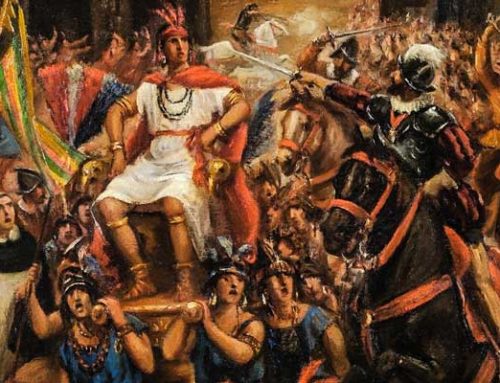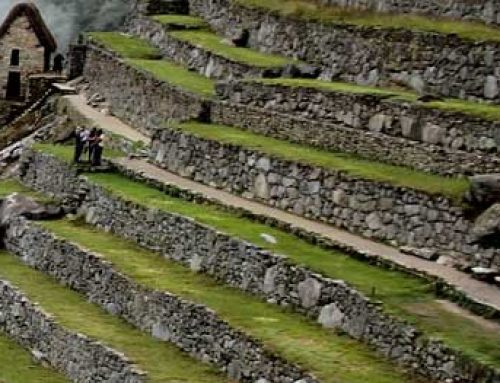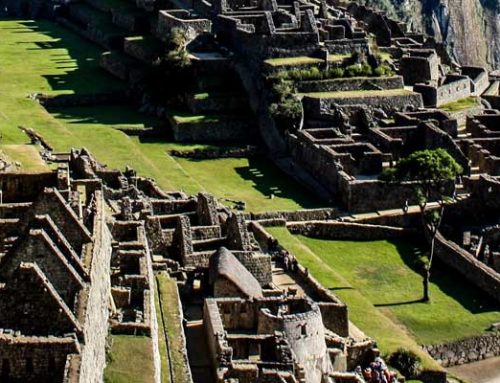When Christopher Columbus arrived in the Caribbean Sea in 1492, he thought he was in Asia. He called the people he encountered “Indios,” because he was convinced he had reached one of the islands of Southeast Asia—land many Europeans called the Indies. Although Columbus likely died believing he reached Asia, we know today that he stumbled on what his fellow Europeans would eventually call a New World.
Through trade routes or war, the people of the Old World—Europe, Asia, and Africa—had been trading goods, ideas, and even diseases for thousands of years before the Columbian voyage. The Native Americans, however, developed their civilizations far from the influences of the Old World.
Some of the earliest widespread evidence of human presence in the Americas comes from 13,000-year-old Clovis spear points found near Clovis, New Mexico, though earlier sites exist. By 10,000 years ago—long before the rise of civilizations in Mesopotamia, Egypt, or China—humans had spread throughout North and South America, from Alaska to the Caribbean and to the continent’s southern tip.
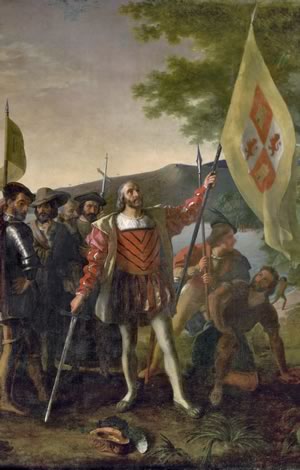
Landing_of_Columbus
Landing of Columbus by John Vanderlyn depicts Christopher Columbus and members of his crew, newly landed on a Caribbean island on October 12, 1492. The painting has been on permanent display in the Capitol Rotunda in Washington, D.C.
As people spread across the continents, they developed distinct languages and cultural traditions. By 1492, the population of the Americas is estimated to have been between 50 and 75 million—though estimates vary widely. The indigenous peoples included hundreds of ethnic groups who spoke more than 160 distinct languages, reflecting great diversity across the hemisphere.
Their societies ranged in complexity from simple to sophisticated. The Maya, Incas, and Aztecs developed a complex architecture that required great mathematical skill to build, though even today, the Yanomami people of Brazil and Venezuela live a lifestyle similar to that of nomads thousands of years ago.
The indigenous civilizations of the New World did not use the wheel for transportation. Although the wheel was known—wheeled toys have been found in Mesoamerican sites—it was not adopted for practical use. This was partly because much of the land, especially in the Andes, was mountainous, but also because there were no suitable draft animals to pull wheeled vehicles.
Additionally, the wheel had limited use because few animals in the New World were suitable for pulling plows or carts. Many large mammals, such as mammoths and giant ground sloths, became extinct thousands of years before European arrival, likely due to a combination of human hunting and climate change. The few remaining large mammals, including bears, bison, moose, and jaguars, were not suited for domestication. In the Andes, people used llamas to carry goods, but llamas are unpredictable and too small to support the weight of an adult rider.
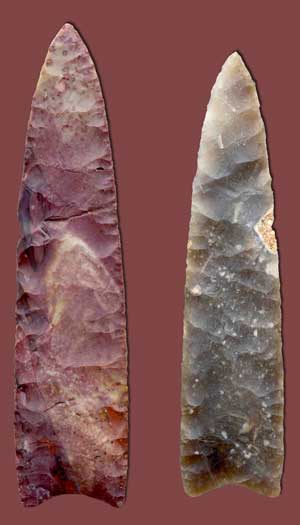
clovis_points
Arrowheads found near Clovis, New Mexico in 1929. They are part of the oldest agreed upon evidence of advanced civilization in the Americas. The arrowheads are more than 13,500 years old.
The Native Americans, however, had not been exposed to these diseases and had no inherited immunity. Immunity means the ability of a person’s body to resist or fight off a disease, often because their ancestors were exposed to it over many generations. Most scholars argue that in 1492, the people of the Americas likely outnumbered those of Europe. Within a generation, however, European diseases spread across the New World, killing an estimated 85 percent of the indigenous people. The Europeans’ greatest weapon in their quest to conquer America was disease, a weapon they did not know they had.
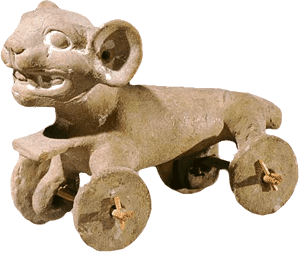
Pre-Colombian-toy
We have several examples of pre-Columbian wood carved toys mounted on wheels. North and South America lacked large land animals, so the people saw little need for the wheel as an adult tool.
The Native Americans, however, had not been exposed to these diseases. In 1492, the people of the Americas outnumbered Europe’s population, but within a generation, European diseases spread across the New World, killing an estimated 85 percent of the indigenous people.
The European’s greatest weapon in their quest to conquer America was disease, a weapon they did not know they had.
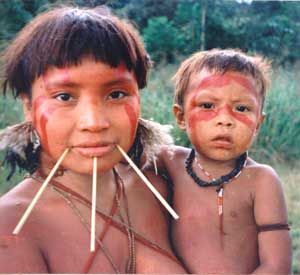
Yanomami
About 35,000 Yanomami live in the Amazon rainforest on the border between Venezuela and Brazil.
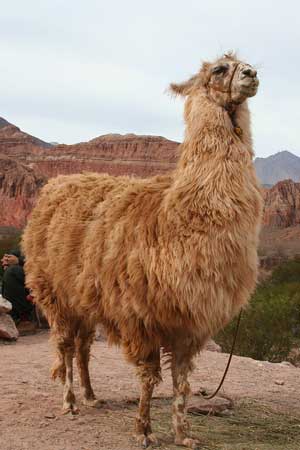
Llama
The South American llama is genetically related to the camels of the Middle East and North Africa. They have been used as a meat and pack animal for hundreds of years.


